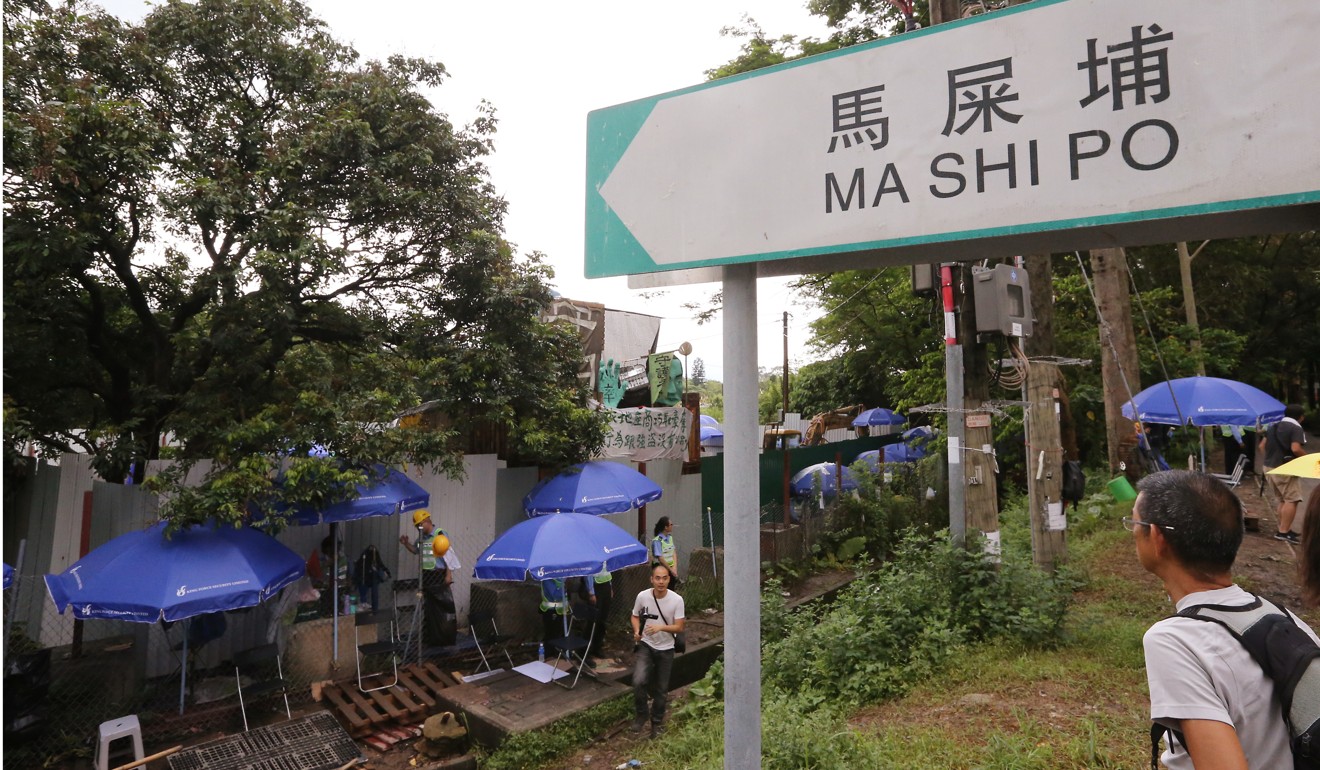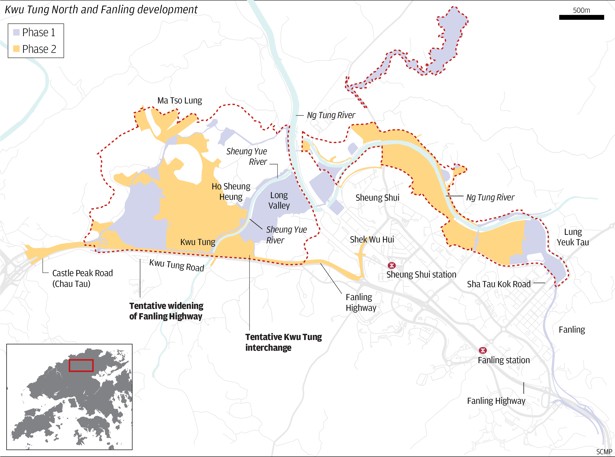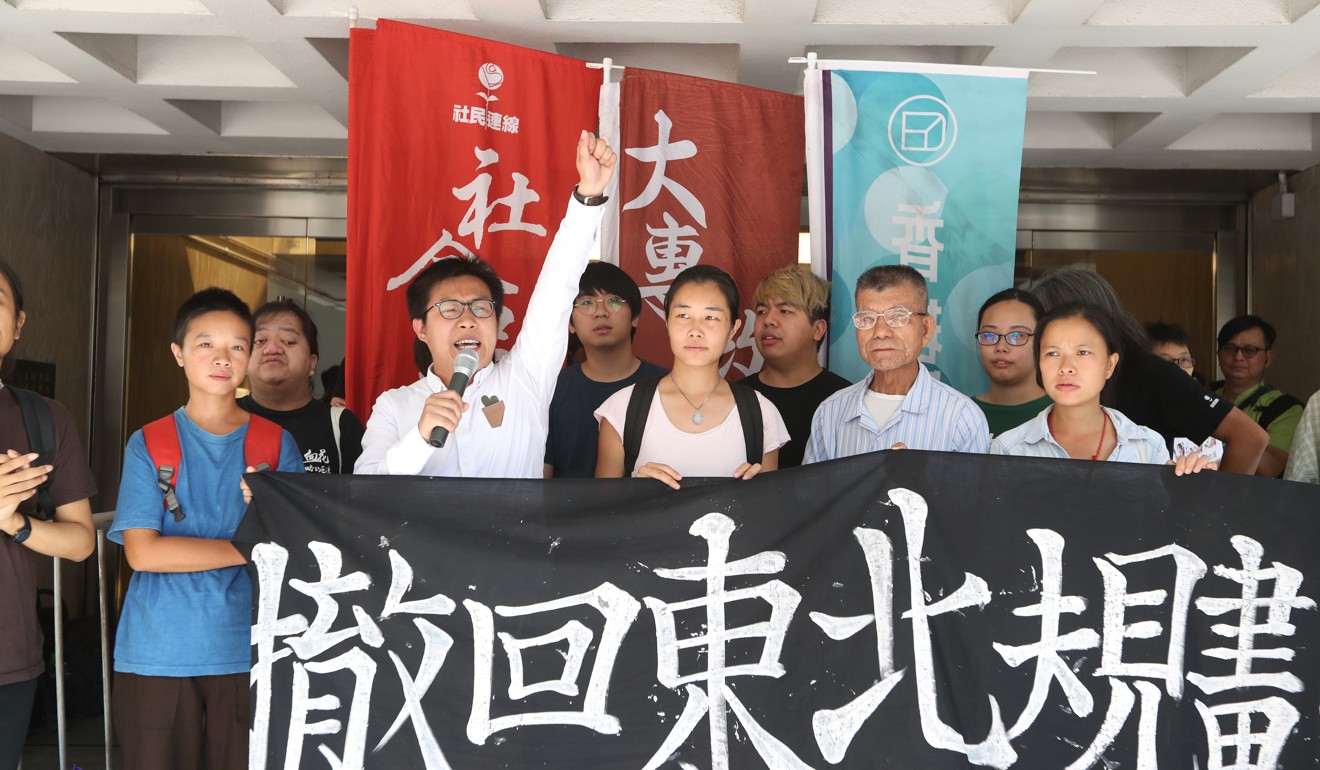
Hong Kong to push ahead with controversial decade-old plan to build two new towns of Fanling North and Kwu Tung North
- Villagers who will be displaced by Fanling North and Kwu Tung North projects vehemently oppose
- Development Bureau officials say they expect less resistance than before, because of more generous compensation package
Hong Kong’s development authority is pushing ahead with a decade-old plan to ease the city’s housing crisis by building two new towns in the north, and is seeking funding this year for the first phase, which will cost HK$47 billion (US$6 billion).
While villagers who will be displaced by the Fanling North and Kwu Tung North projects have vehemently opposed the plan, officials from the Development Bureau on Wednesday said they were expecting less resistance than before, as a more generous compensation package introduced last year had drawn a “good” response.
This will mark the first major step by the government to follow up on the recommendations of the land supply task force, which released its strategic report last month calling on officials to speed up new town developments, among other measures.
The biggest obstacle so far has been strong resistance by hundreds of villagers unwilling to give up their rural homes and lifestyles to be relocated in high-rise public housing flats.

“Now the task force has stated the need to speed up this project, we call on society and lawmakers not to ask again why we need to build new towns, and what we should do about compensation,” a bureau spokeswoman said. “It’s time to talk about how to implement the projects.”
Why brownfield sites are not a quick fix for Hong Kong’s land crisis
The two new towns are slated to offer 21,000 flats when the first phase is completed in 2026. The entire development will produce 71,800 flats – 70 per cent of which are marked for public housing – and accommodate some 188,100 residents by 2031.

“Our policy is now more people-oriented,” the spokeswoman said, “but it’s not practical to expect 100 per cent acceptance.”
Officials have so far contacted 77 per cent of the 445 households which will be affected by the first phase of development. Among them, about half were willing to be vetted for eligibility for compensation, the bureau said.
Under the enhanced compensation package, those who have lived in a licensed squatter home for at least seven years, for example, will not be subject to a means test when applying for subsidised flats – currently, they must meet income and asset limits.

Those who accept the compensation package will only have to prove they have lived in their home for two years continuously, instead of 10 years. The maximum amount offered to them will double from the current HK$600,000 (US$76,500) to HK$1.2 million (US$153,000).
Sai Kung development given green light, but ‘roads must be improved’
The HK$33.6 billion funding request will cover infrastructure works at both new town sites, design work for the next phase, part of the compensation package, and a nature park in the Long Valley wetland to be managed by the Agriculture, Fisheries and Conservation Department.
Lee Siu-wah, a Kwu Tung North resident who is in touch with some 100 affected villagers, said his group’s demand for their village to be preserved at its original site or relocated nearby had been ignored for years.
“True, some villagers have compromised and accepted compensation,” Lee, a wood craftsman, said. “But what do I do if you move me to a high-rise from my village home, and how do I make a living?”
Becky Au Hei-man, who lives in Ma Shi Po village in Fanling North, noted that a fellow villager was challenging the government’s compensation calculations through a judicial review.
“On paper, it seems like they’ve doubled the allowance to HK$1.2 million, but actually under the new rules we will never qualify for so much,” she said.
Au said her group of about 80 villagers preferred not to move at all.

“Who would want to move from a place that has been home to three generations? I don’t see how the government is adopting a more people-oriented approach by forcing us to leave,” she said.
Civic Party lawmaker Tanya Chan noted that officials had only persuaded 35 per cent of affected villagers to be vetted for compensation, and the concerns of the majority would have to be looked at before Legco voted on the funding.
Democratic Party lawmaker Andrew Wan Siu-kin urged officials to continue negotiating with those residents who were dissatisfied with the compensation offer.
The new town projects have been the cause of emotional and sometimes militant protests through the years.
Thirteen young activists who were prosecuted and initially given community service orders ended up being sentenced to jail terms of up to 13 months by an appellate court. The jail terms were later set aside by the top appellate court, on the grounds of “grave injustice”, last year.
Additional reporting by Naomi Ng

